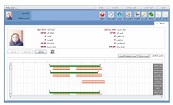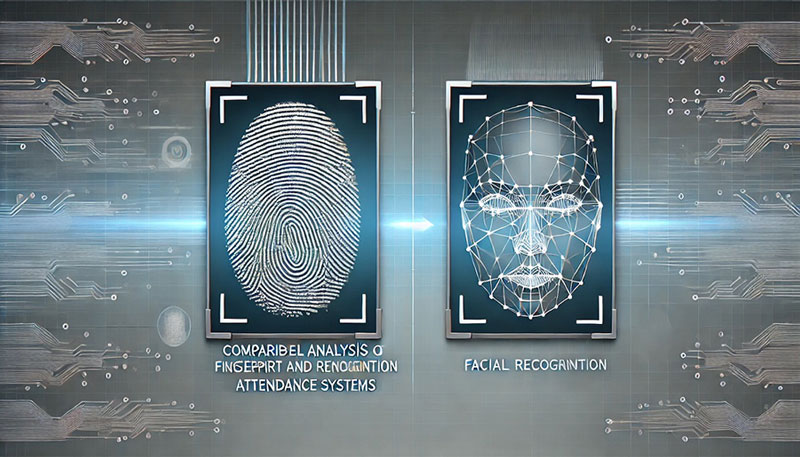Attendance and access control systems have evolved significantly, with Artificial intelligence now at the forefront of innovation. Traditional systems often struggle with inefficiencies, inaccuracies, and limitations in scalability. However, by incorporating AI, organizations can significantly improve attendance management and access control, making these systems smarter, more efficient, and reliable.
This article delves into the role of AI in enhancing Attendance Systems, exploring its applications, benefits, challenges, and future possibilities.
The Limitations of Traditional Attendance Systems
Traditional systems such as punch cards, manual registers, or basic biometric devices are still common in many workplaces. However, they come with inherent drawbacks:
- Human Error: Manual entry systems are prone to inaccuracies.
- Fraudulent Practices: Buddy punching or using someone else’s access credentials is common.
- Limited Scalability: Scaling traditional systems for large organizations is often cumbersome.
- Inadequate Real-Time Capabilities: They lack the ability to provide real-time insights or integration with other systems.
AI in Attendance Systems: Key Features and Advantages
AI-powered attendance systems are transforming the landscape by addressing these challenges. Here’s how:
1. Facial Recognition Technology
AI-driven facial recognition eliminates the need for cards or fingerprints. By analyzing facial features, the system ensures accurate identification and prevents impersonation.
- Accuracy: Modern AI algorithms have an accuracy rate of over 99%.
- Efficiency: Employees can be recognized within seconds, reducing entry bottlenecks.
2. Predictive Analytics
AI systems can analyze attendance patterns and provide insights into employee behavior, such as:
- Frequent absenteeism.
- High turnover risks.
- Trends in late arrivals.
3. Multi-Modal Authentication
AI enhances security by combining facial recognition with other metrics like voice recognition, iris scans, or behavioral biometrics.
4. Real-Time Monitoring
AI-powered systems enable real-time monitoring of attendance and access control data, improving workplace safety and efficiency.
5. Integration with IoT
AI systems integrate seamlessly with IoT devices such as smart gates, cameras, and sensors, creating a cohesive access control ecosystem.
Applications of AI in Access Control Systems
AI is also reshaping how access control is managed:
1. Dynamic Access Levels
AI can grant or revoke access based on real-time data, such as work schedules or an individual’s role within the organization.
Threat Detection
By analyzing access patterns, AI systems can detect and flag suspicious activity, such as unauthorized access attempts.
Customized Visitor Management
AI-powered systems streamline visitor management by pre-registering guests and providing temporary access credentials.
Challenges of Implementing AI in Attendance Systems
While AI brings numerous benefits, implementation poses challenges:
- Cost: High initial investment in AI-powered systems can be a barrier for small and medium-sized enterprises (SMEs).
- Data Privacy Concerns: AI systems often process sensitive biometric data, raising questions about privacy and compliance with laws like GDPR.
- Integration with Legacy Systems: Many organizations find it challenging to integrate AI solutions with existing infrastructure.
- Skill Gap: The need for skilled personnel to manage and maintain AI systems is another significant hurdle.
Future Trends in AI-Driven Attendance Systems
AI’s role in attendance and access control systems is only expected to grow. Here are some key trends:
Deep Learning for Enhanced Recognition
Advanced deep learning algorithms will further improve the accuracy of facial and voice recognition systems.
Emotion Recognition
Future AI systems might detect employee emotions, offering insights into workplace morale and productivity.
Blockchain for Secure Data
Combining AI with blockchain technology will enhance data security and prevent unauthorized tampering.
Cloud Integration
AI attendance systems will increasingly utilize cloud computing for better scalability and remote accessibility.
Voice-Activated Attendance
Voice-activated systems powered by AI will gain popularity for their hands-free convenience.
Case Studies: Successful Implementation of AI Attendance Systems
1. A Global Tech Company
By implementing AI-powered attendance systems, this organization reduced fraudulent practices by 70% and improved overall productivity by 30%.
2. A Manufacturing Firm
AI systems helped streamline shift management, reducing operational delays and improving workforce efficiency.
Conclusion
The incorporation of AI into attendance systems and access control is revolutionizing how workplaces manage time and security. While challenges remain, the benefits far outweigh the drawbacks, making AI a vital component of modern workforce management solutions. Organizations that embrace this technology will not only improve efficiency but also ensure a more secure and seamless working environment.







































































